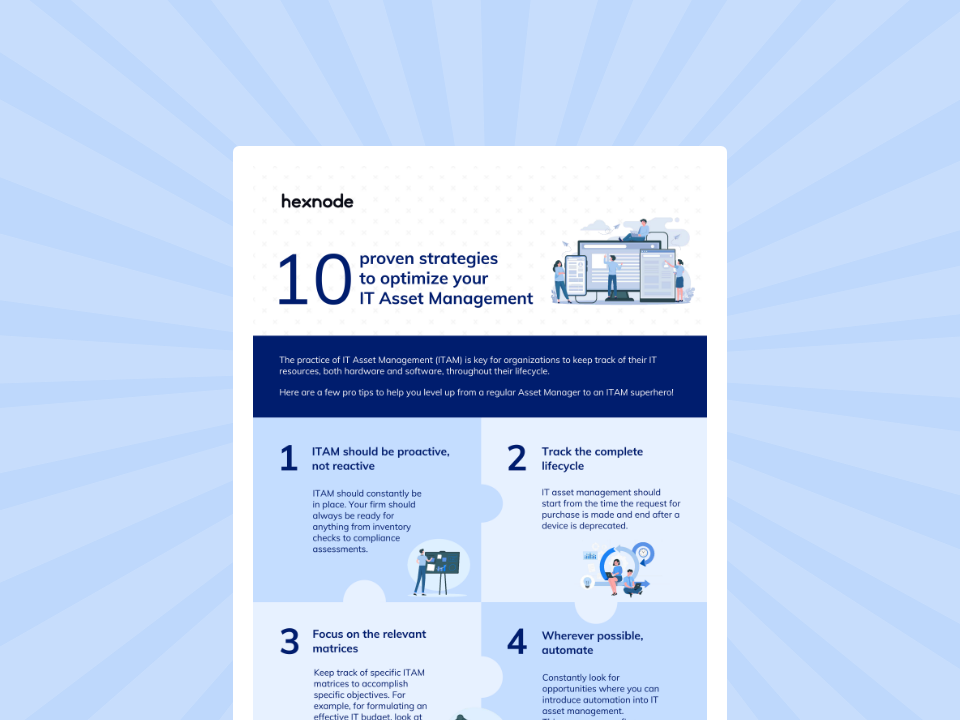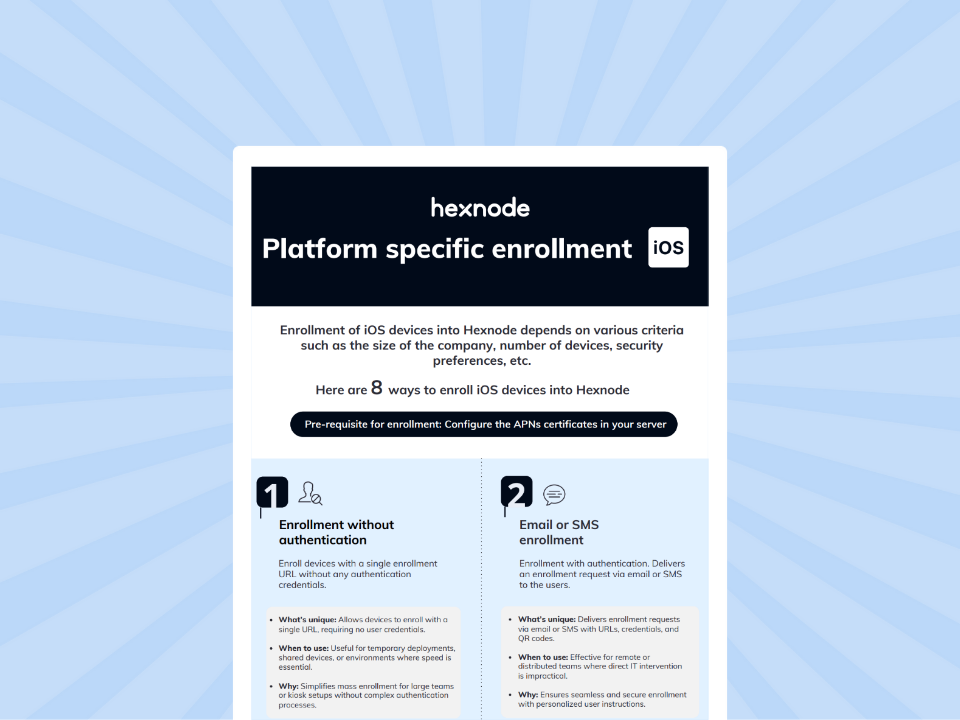Effective IT asset management streamlines workflows, reduces downtime, and enhances overall productivity.
Asset management is the practice of effectively tracking, organizing and optimizing valuable resources that an organization owns or manages. In other words, it helps organizations keep tabs on what they own, make informed decisions about their assets, and ultimately optimize their use to achieve operational excellence.
IT Asset Management (ITAM) in an organization is important for several reasons. Let’s take a quick look at some of them:
Improved efficiency and productivity
Proper execution of asset management can help organizations identify and eliminate unnecessary assets, which can free up resources that can be used to improve efficiency and productivity. Consequently, it helps to make sure assets are used in the most effective way possible.
Reduced costs
IT asset management can help organizations forecast and fix potential problems with assets before they cause costly downtime or damage.
Increased compliance
ITAM can help organizations to comply with all relevant laws and regulations governing IT assets. This includes regulations such as the General Data Protection Regulation (GDPR) and the System and Organizational Control 2 (SOC 2).
Increased visibility
Organizations can get a clear view of their IT assets, including their location and usage with proper IT asset management. You can use this information to make better decisions about IT spending and to identify potential risks.
Implementing ITAM can be quite tricky whether it is an SMB or a large-scale enterprise. These include dealing with a large number and different types of assets, the requirement for coordination between different departments, and the constantly changing nature of the IT environment.
However, you can overcome all these challenges if you have sufficient preparation. One best practice to follow is being proactive in ITAM. Being proactive means taking preventive measures, anticipating issues related to your assets, and implementing strategies to address them before they become major problems. By being proactive, organizations can minimize downtime, reduce costs associated with asset failures, optimize asset utilization, and ensure compliance with licensing and regulatory requirements.
We have compiled ten such proven strategies to optimize the IT asset management system of your organization. Download the infographic to catch sight of the ITAM best practices put together by experts from the industry.





